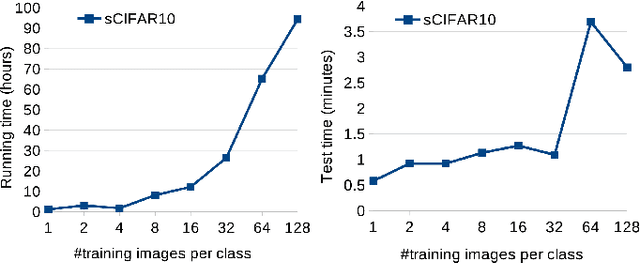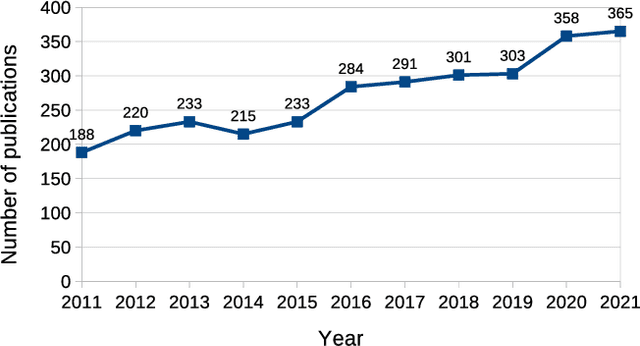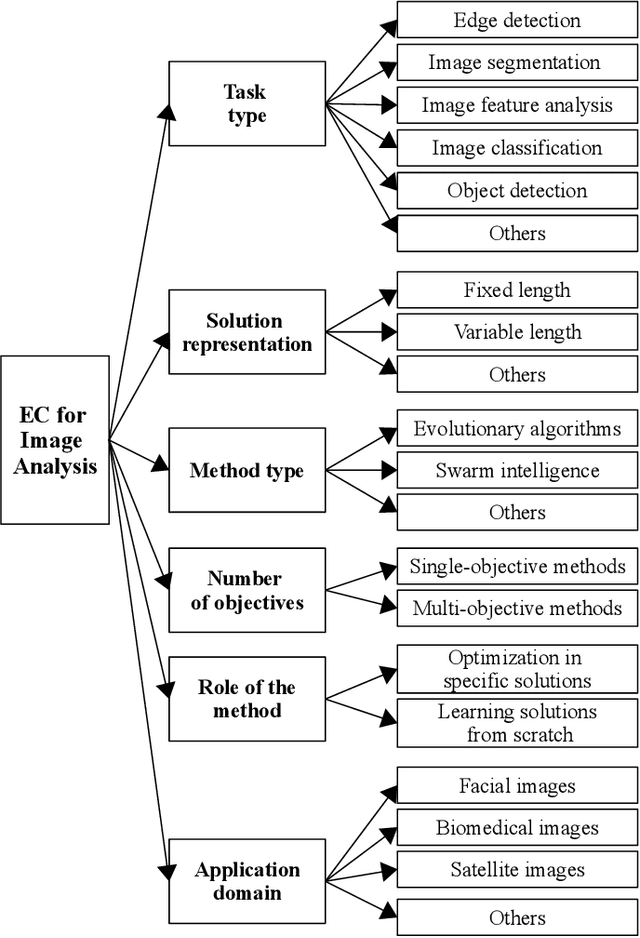Ying Bi
Genetic Programming-Based Evolutionary Deep Learning for Data-Efficient Image Classification
Sep 27, 2022



Abstract:Data-efficient image classification is a challenging task that aims to solve image classification using small training data. Neural network-based deep learning methods are effective for image classification, but they typically require large-scale training data and have major limitations such as requiring expertise to design network architectures and having poor interpretability. Evolutionary deep learning is a recent hot topic that combines evolutionary computation with deep learning. However, most evolutionary deep learning methods focus on evolving architectures of neural networks, which still suffer from limitations such as poor interpretability. To address this, this paper proposes a new genetic programming-based evolutionary deep learning approach to data-efficient image classification. The new approach can automatically evolve variable-length models using many important operators from both image and classification domains. It can learn different types of image features from colour or gray-scale images, and construct effective and diverse ensembles for image classification. A flexible multi-layer representation enables the new approach to automatically construct shallow or deep models/trees for different tasks and perform effective transformations on the input data via multiple internal nodes. The new approach is applied to solve five image classification tasks with different training set sizes. The results show that it achieves better performance in most cases than deep learning methods for data-efficient image classification. A deep analysis shows that the new approach has good convergence and evolves models with high interpretability, different lengths/sizes/shapes, and good transferability.
* Accepted by IEEE Transactions on Evolutionary Computation
A Survey on Evolutionary Computation for Computer Vision and Image Analysis: Past, Present, and Future Trends
Sep 14, 2022



Abstract:Computer vision (CV) is a big and important field in artificial intelligence covering a wide range of applications. Image analysis is a major task in CV aiming to extract, analyse and understand the visual content of images. However, image-related tasks are very challenging due to many factors, e.g., high variations across images, high dimensionality, domain expertise requirement, and image distortions. Evolutionary computation (EC) approaches have been widely used for image analysis with significant achievement. However, there is no comprehensive survey of existing EC approaches to image analysis. To fill this gap, this paper provides a comprehensive survey covering all essential EC approaches to important image analysis tasks including edge detection, image segmentation, image feature analysis, image classification, object detection, and others. This survey aims to provide a better understanding of evolutionary computer vision (ECV) by discussing the contributions of different approaches and exploring how and why EC is used for CV and image analysis. The applications, challenges, issues, and trends associated to this research field are also discussed and summarised to provide further guidelines and opportunities for future research.
* Conditionally accepted by IEEE Transactions on Evolutionary Computation
Learning and Sharing: A Multitask Genetic Programming Approach to Image Feature Learning
Dec 18, 2020



Abstract:Using evolutionary computation algorithms to solve multiple tasks with knowledge sharing is a promising approach. Image feature learning can be considered as a multitask problem because different tasks may have a similar feature space. Genetic programming (GP) has been successfully applied to image feature learning for classification. However, most of the existing GP methods solve one task, independently, using sufficient training data. No multitask GP method has been developed for image feature learning. Therefore, this paper develops a multitask GP approach to image feature learning for classification with limited training data. Owing to the flexible representation of GP, a new knowledge sharing mechanism based on a new individual representation is developed to allow GP to automatically learn what to share across two tasks and to improve its learning performance. The shared knowledge is encoded as a common tree, which can represent the common/general features of two tasks. With the new individual representation, each task is solved using the features extracted from a common tree and a task-specific tree representing task-specific features. To learn the best common and task-specific trees, a new evolutionary process and new fitness functions are developed. The performance of the proposed approach is examined on six multitask problems of 12 image classification datasets with limited training data and compared with three GP and 14 non-GP-based competitive methods. Experimental results show that the new approach outperforms these compared methods in almost all the comparisons. Further analysis reveals that the new approach learns simple yet effective common trees with high effectiveness and transferability.
 Add to Chrome
Add to Chrome Add to Firefox
Add to Firefox Add to Edge
Add to Edge